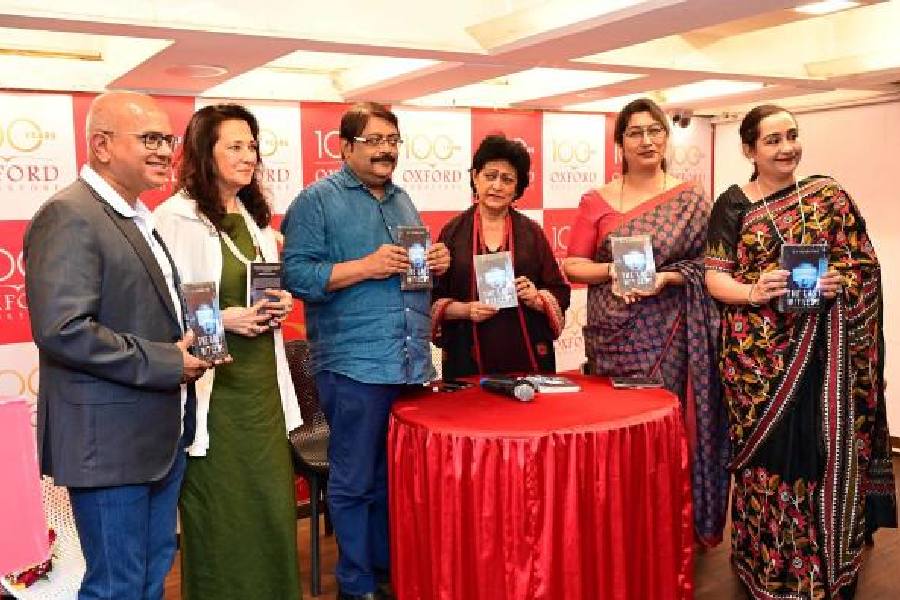G V Subba Rao’s third novel The Last Witness is a gripping thriller that deals with rocket launches, espionage, and the murky world of political conspiracies. The author was in town on September 26 to attend the launch of the book at Oxford Bookstore on Park Street. Also in attendance were Ashoke Viswanathan, Oindrilla Dutt, Debnita Chakravarti, and Shabina Nishat Omar.
The launch was followed by a panel discussion, moderated by Viswanathan, which touched upon themes like neurodivergence, feminism, post-modernism and the impact Agatha Christie continues to have on the crime/thriller genre today. Chief guest Moon Moon Sen spoke to the author about their common background in films, storytelling, and other literary and cinematic arts at the end of the session.
“The novel provokes curiosity, but how do you discuss a thriller or crime or mystery novel without revealing what it’s all about? We must, unfortunately, skirt around the main issues and leave the content covered during this session, even though this will be very difficult to do,” Viswanathan began, going on to highlight the many qualities Rao’s writing possesses. He pointed out the reader-friendliness and fast pace of the plot, stressing that the author goes into certain convincing detail which is usually not present in books of the genre. “There’s an almost OTT-like quality to the plot,” Viswanathan remarked, which was corroborated by Rao, who later talked about his involvement in film and television.
“Thrillers come to me easily. In fact, I find writing romance or fantasy rather difficult. And even within that genre, after a certain point, the story writes itself and I, as the author, become a bystander. But I always want my characters to be very real and relatable. That is how I like to build my stories,” Rao shared.
Oindrilla spoke of the characters in the story, who are unconventional in the sense that the book deals to a certain degree with neurodivergence and autism, which in popular contemporary fiction is still not explored very widely. “The book deals with difficult material. One of the characters in the story is an autistic child, who is, in a way, the core of the novel. Very often in literature when a character like that is introduced in a story, it almost feels like the author is doing it to tick a box or be politically correct for the sake of being politically correct, but not once do you feel that here. And personally, having been associated with children with cerebral palsy for 34 years now, I know how intelligent they can be, and how much they can comprehend that others cannot. So reading a character like that was special to me,” she said.
Debnita praised the brilliance of the story, congratulating Rao on writing a ‘real page-turner’. She also spoke on how fast the plot picks up pace, while also integrating each character and their background seamlessly into the story. “All the characters in the book are very relatable, and they each find their own strength as the story goes along. It’s a very organically built story and there’s a sense of spontaneity throughout,” she remarked.
Shabina, on the other hand, added a postmodern turn to the discussion by highlighting the shifts in narrative in the story. “There is a level of multiculturalism and multi-ethnicity in the book. One of the most interesting things about post-modernism is that the world is expanding and contracting at the same time. The world has become smaller but also is expanding because various ethnic identities are coming to the forefront and integrating themselves into others. So the centre becomes the margin and the margin becomes the centre,” she said, elaborating on the disparities that arise in the novel in terms of marginalised and non-marginalised characters, cultures, and perspectives. “What I found most striking is here we have a man of science, a literal scientist, so swayed by a child with special needs that he suggests that she should be treated through yoga, which is about spirituality and faith. It really tells us that when everything fails, human beings turn to the divine. It is who we are, and reading of it made the novel all the more authentic.”
Picture: Pabitra Das











